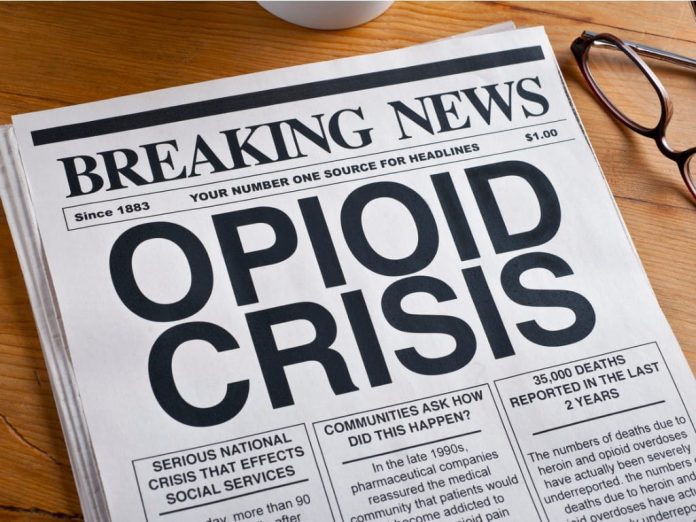Opioid abuse has been affecting the whole world for many years, but a recent increase in the use of synthetic opioids has caused high levels of harm in countries like the United States.
While addiction treatment for opioid abuse is available, there seems to be a national health crisis involving synthetic opioids, with more than 150 people dying daily from synthetic opioid-related deaths. But what exactly are synthetic opioids, and how did this crisis come about?
Table of Contents
What Are Synthetic Opioids?
While natural opioids occur in substances extracted from the seeds of certain poppy plants, synthetic opioids are lab-made substances. Opioids such as morphine and codeine target areas of the brain to provide pain relief, and synthetic opioids target the same area. While some synthetic opioids, such as fentanyl and methadone, have been approved for medical use, many illicitly produced synthetic opioids are very potent and lead to fatal overdoses.
As with most other opioids, the use of synthetic opioids carries a risk for physical and mental health. A person can develop tolerance to it, where the body becomes used to it and needs more of it to feel the same effects. It can also cause dependence and addiction, whereby a person has a compulsive need and urge to take the drug and does so continually despite negative consequences.
The CDC reported more than 56,000 deaths involving synthetic opioids in the United States in 2020, which accounts for over 82% of all opioid -involved deaths. Awareness organization Families Against Fentanyl analyzed data released by the CDC in 2021 and found that illicit fentanyl was the top cause of death for Americans aged between 18 and 45.
The Case of Fentanyl
While the abuse of synthetic opioids is said to parallel that of heroin and prescription painkillers, some substances, like fentanyl, have a higher potency and are deadly even in small doses.
Fentanyl and other highly potent synthetic opioids are considered the most lethal category of illicit substances misused in the United States.
Fentanyl and its derivatives or analogs have become increasingly accessible and available in the recreational drug market. Illegal fentanyl can be found as a powder, in eye droppers or nasal sprays, while manufacturers have also pressed fentanyl into pills to make them appear like prescription painkillers.
Pills and powders that contain fentanyl or other analogs have become a threat to public health due to the varying potency and quantity of their contents. Fentanyl can be 50 to 100 times more potent than morphine, while carfentanil could be up to 10,000 times more potent than morphine. While a person taking synthetic opioids may experience relaxation and euphoria, they could also have drowsiness, nausea and vomiting, sedation, and difficulty breathing. An easy overdose of a synthetic opioid can cause coma and respiratory failure, which can lead to death.
How Synthetic Opioids Lead to a Crisis
According to Johns Hopkins associate professor Dr. Paul Christo, medical practitioners began using opioids for chronic pain treatment more frequently in the 1990s. This led to an increase in opioid use among people who do not need it. The US Department of Health and Human Services also stated that the increased prescription of opioid medications was causal to the misuse of both prescription and non-prescription opioids.
When the highly addictive nature of opioids was understood, physicians did reconsider prescription guidelines, which lessened abuse. However, a spike in heroin supply and a decrease in its price co-occurred. Opioid users could obtain heroin more easily than prescription medication and switched to it.
Fentanyl, among other cheaper but more potent synthetic opioids, started to be mixed into illicit drugs such as heroin, as a means for drug dealers to make more money. The properties of synthetic opioids give an advantage to illegal manufacturers and dealers. Unlike natural opioids which come from poppy fields and need time and space to mature, synthetic opioids can be man-made in a relatively small space, quickly, and with easily attainable chemicals. This accounts for the CDC’s report of a yearly 88% increase in overdose deaths from fentanyl between 2013 and 2016.
Dr. Christo explains that illegal fentanyl is potent and can also be found in other recreational drugs such as cocaine, methamphetamine, and cannabis. The DEA also states that fentanyl suppliers continually experiment with new synthetic opioids as they attempt to evade new regulations imposed by the United States.
Fentanyl’s potency is what makes it so dangerous. With very little needed to feel the desired effect, it is difficult to determine the right dose, and a person will also be unaware of exactly how much fentanyl is in other drugs they buy. The potency of fentanyl makes the margin of error minut, meaning that if someone consumes some milligrams too much, the results can be fatal.
Signs of an Overdose
A person who is undergoing or is about to undergo an opioid overdose will show specific symptoms, and recognizing these could help save a life.
Signs include:
- Limp body
- Vomiting, choking, or gurgling sounds
- Sedation and unconsciousness
- Inability to wake up
- Inability to speak
- Small ‘pinpoint pupils’
- Decreased heart rate
- Slow, shallow, or no breathing
- Cold and clammy skin
- Purple or blue color of the skin and nails
While a synthetic opioid overdose can be treated with naloxone, fentanyl overdose may require more than one dose of naloxone to block the effect of the opioid on the body and the brain. Usually, signs of an overdose are cause for a medical emergency and 911 should be called even if someone can help with Narcan or naloxone.



















